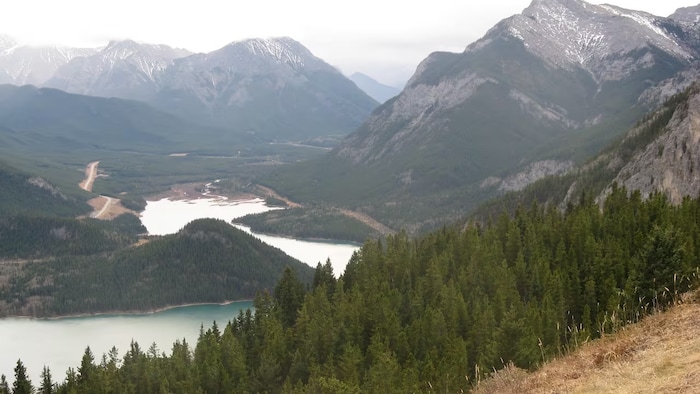Open in full screen mode The Marmot Creek Well is located in the Kananaskis region of southern Alberta. It is one of the few groundwater monitoring wells Alberta has in the mountains. The Canadian Press In the middle of a playground in the mountains of Alberta, next to a resort popular ski resort, there is a well sunk into the bedrock that worries John Pomeroy. The Marmot Creek well in Kananaskis Country has been there for generations, says the University of Saskatchewan water specialist. This is one of the few groundwater monitoring wells Alberta has in the mountains. Away from any human influence, it's a good indicator of what's really going on. The lowest water levels have all been recorded in the last seven years and are much lower today than they were in the 1970s and 1980s, notes Mr. Pomeroy. This will be a climate signal that we will see.
As climate change models predict, drought is hitting the Prairies, particularly southern Alberta. The province has already warned municipalities to expect another dry summer, prepare aid for farmers and plan to quickly mobilize firefighting teams.
Loading
Ron DeSantis withdraws from race for Republican nomination
ELSEWHERE IN NEWS: Ron DeSantis withdraws from the race for the Republican nomination
However, these measures concern surface waters. About 600,000 Albertans rely on groundwater, and scientists and rural officials say not enough is known about the effects years of drought have had on the invisible flows beneath our feet. /p>
We need to make sure we manage groundwater and surface water as a common resource, Pomeroy argues. If we deplete one, we deplete the other.
So far, the signals are mixed. Alberta maintains a network of more than 200 monitoring wells across the province and many of them are showing stable or even increasing water levels, but this is not the case for many others.
Masaki Hayashi, a hydrologist at the University of Calgary, pointed to wells in Rocky View County, outside Calgary, where 40 people live 000 people.
It's been another year of drought, he says. Now these wells are reaching unprecedented levels.
Long-term trends are ambiguous, he points out. Precipitation cycles vary between wet and dry years.
The findings lean towards these trends. Four dry years, from 2015 to 2018, were followed by a few wet years. Precipitation data at the Calgary airport shows the past three years have been dry again.
Streams, rivers and lakes are all connected and what seeps in must first be absorbed.
Unless you have this regeneration from time to time, [the levels] will continue to drop.
A quote from Masaki Hayashi, hydrologist at the x27;University of Calgary
Paul McLauchlin, chair of Alberta Rural Municipalities and an environmental expert, notes that municipalities are increasingly concerned about the impact of dry years on their water reservoirs .
This is a critically important resource whose we don't know much.
A quote from Paul McLauchlin, Chair of Rural Municipalities of Alberta
McLauchlin points out that the underground drought has been going on for 50 years. According to him, even if a major storm like Snowmageddon hit the province, it would not cover the future deficit.
Some wells in the area near Ponoka are already dry, he notes.
McLauchlin says Alberta does a good job monitoring groundwater conditions, but falls short when it comes to understanding the resource.
Do we have a sufficient understanding of this surface link? It could take 20 years for water to come to the surface from the ground or it could take 1,000 years, depending on the area, he says.
We simply don't have the data to demonstrate it.
Alberta Ministry of Environment and Protected Areas spokesperson Tom McMillan says the province takes groundwater concerns seriously.
We will upload more data this spring to better track water levels and add near-time groundwater level monitoring equipment real to a greater number of wells throughout the province.
Well owners are encouraged to monitor water levels, says McMillan. The province is increasing the number of workshops available to help people with this work.
When it comes to water “We're all in this together,” says McMillan.
John Pomeroy is reluctant to generalize about what's happening to Alberta's aquifers .
Some are at their lowest levels, others are increasing. The time lag between when water falls and when it seeps through pores in rocks makes predictions more difficult. But trends are emerging, he acknowledges.
In areas of Alberta where there has been a drought for four or five years, we are seeing a considerable drop in groundwater levels.
This is something we need to monitor.

